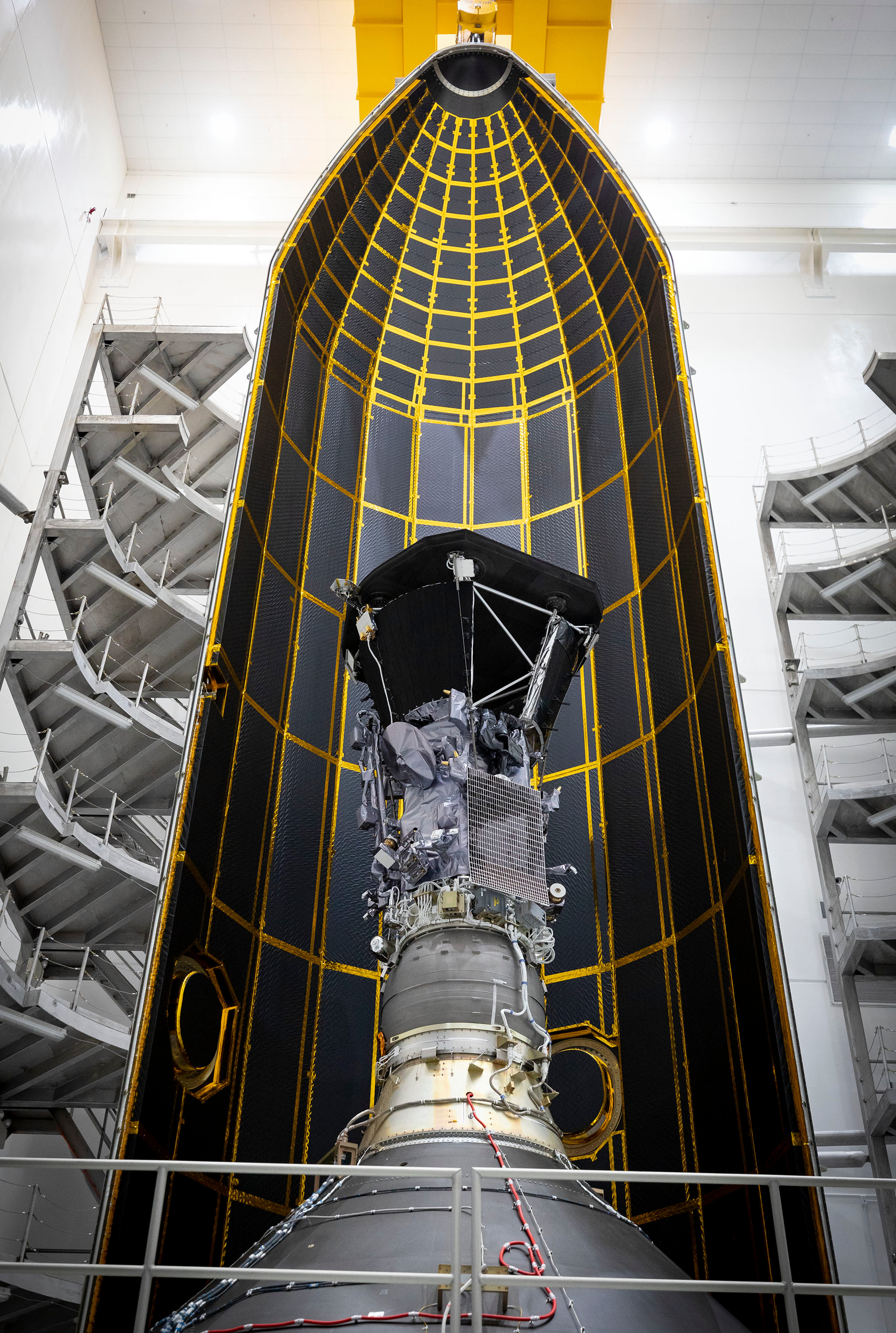Parker Solar Probe Wins AAS 2018 Neil Armstrong Space Flight Achievement Award
Posted on 2019-03-21 14:05:38The Parker Solar Probe team has been named the winner of the 2018 Neil Armstrong Space Flight Achievement Award, given by the American Astronautical Society at its 57th Robert H. Goddard Memorial Symposium in Silver Spring, Maryland.
Launched on August 12, 2018, NASA’s Parker Solar Probe mission is the culmination of a 60-year quest to build a spacecraft and instruments capable of exploring the searing temperatures and radiation of the corona, and investigate the processes that drive the solar wind. Named for physicist Eugene Parker, who first suggested the existence of such a solar wind, the mission has already completed one orbit of the Sun, with 23 more scheduled for the seven-year primary mission. Initial data from the four instrument suites has revealed new and previously unobserved processes at play in the near-solar region; the first major scientific findings will be presented in the fall of 2019. Parker Solar Probe was designed, built, and is operated for NASA by the Johns Hopkins Applied Physics Laboratory in Laurel, Maryland.
“The Armstrong Award is an outstanding testament to the vision, hard work, and accomplishments this team has made over the past decade,” said Project Manager Andy Driesman of Johns Hopkins APL. “From NASA to APL to the investigation teams, and all our mission partners, we worked together to create a uniquely capable spacecraft that’s setting records and contributing to new understandings of solar science. We’re very proud of our achievements to date, and we’re honored to have this historic recognition.”
“Parker Solar Probe provides us with a direct view of what’s driving the solar wind streaming off the Sun,” said Nicky Fox, the director for the Heliophysics Division at NASA HQ in Washington, DC. “This wind fills space with particles, energy and magnetic fields – and the more we know about its source, the more we can understand how it affects planetary systems throughout the solar system, including the space weather near Earth that can interfere with spacecraft and astronauts.”
In November 2018, Parker Solar Probe became the closest spacecraft to the Sun when it passed within 15 million miles of our star; at the time, it was traveling at 213,200 miles per hour, making it the fastest human-made object in history. The spacecraft will eventually reach speeds of 430,000 miles per hour.
“The dedication of the men and women of the Parker Solar Probe team to creating a spacecraft unlike any other in history has been exceptional,” said Space Exploration Sector Head Mike Ryschkewitsch of APL. “They created the first mission to explore the atmosphere of the Sun – a mission of exploration that scientists have been seeking for six decades – by applying new technologies and innovations to an incredibly difficult challenge. The scientific discoveries we’re going to make thanks to Parker Solar Probe will be revolutionary, and this team should be immensely proud of what it has accomplished.”
The Space Flight Achievement Award was first presented by the AAS in 1958. It was renamed to honor Apollo 11 astronaut Neil Armstrong, the first human to walk on the Moon. Previous recent winners include teams representing the Lunar Reconnaissance Orbiter, the New Horizons mission, and the Curiosity Mars Science Laboratory. Founded in 1954, the AAS is the premier network of current and future space professionals dedicated to advancing all space activities.

PSPFairingHalf
Credit: NASA/Johns Hopkins APL/Ed Whitman
High-Res Image